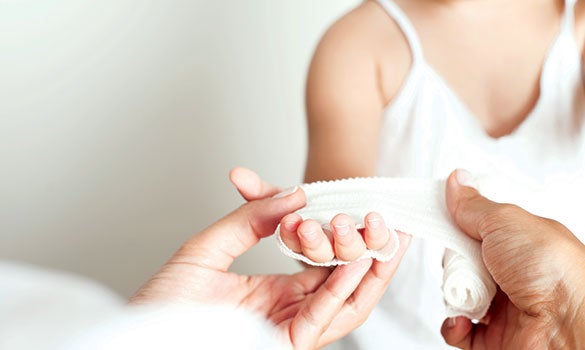
 At 28 and newly married, life was rosy for Shou Zhu when the diagnosis of Acute Leukaemia took her on a detour with hospitalisations, blood tests, and two rounds of bone marrow stem cell transplants which did not graft well. As a last resort to save her life, her doctor suggested a cord blood stem cell transplant.
At 28 and newly married, life was rosy for Shou Zhu when the diagnosis of Acute Leukaemia took her on a detour with hospitalisations, blood tests, and two rounds of bone marrow stem cell transplants which did not graft well. As a last resort to save her life, her doctor suggested a cord blood stem cell transplant.
Fortunately for her, a match was found in the Singapore Cord Blood Bank’s (SCBB) public cord blood inventory, and the unrelated cord blood stem cell transplantation was performed successfully.
Today, Shou Zhu is doing well, and able to return to work and look after her family. She also makes time to volunteer with SCBB as an outreach advocate.
CORD BLOOD BANKING: A LIFE-SAVING PROCESS
The use of unrelated Cord Blood Stem Cells has grown over the past 25 years. It has become recognised as a trusted alternative source of haematopoietic stem cells in haematopoietic stem cell transplantation (HSCT), and increasingly in research in regenerative medicine.
“The biggest use of unrelated cord blood stem cells today is in the area of allogeneic bone marrow transplantation, where an unrelated recipient is transplanted using cord blood for a variety of blood disorders. Active research may see more cord blood being used to treat other conditions and diseases,” shared A/Prof Aloysius Ho, Head, SingHealth Duke-NUS Blood Cancer Centre and Medical Director of SCBB.
In Singapore, 40% to 60% of patients needing HSCT are unable to find a matching donor in their own family. Since genetic types are inherited, they are most likely to find an adult donor match within their own racial group. But cord blood does not have to be perfectly matched: a 4 out of 6 (67%) match with cord blood may be just as good as a 100% match with an adult donor, enabling greater versatility.
THE CONTRIBUTING ROLE OF OBSTETRICIANS IN THE GROWTH OF BANKABLE CORD BLOOD UNITS
There are close to 50,000 babies born annually in Singapore. However, less than 10% of expectant parents publicly donate their baby’s cord blood voluntarily. The rest of the cord blood units (CBUs) are either discarded or stored with private cord blood banks.
Factors that contribute to the discard of these precious CBUs include expectant moms failing to make an informed decision on their baby’s cord blood due to limited knowledge on cord blood banking, and collected CBUs not meeting the minimum quality criteria. These can be addressed with the support of Obstetricians (OBs). Within their sphere of influence, OBs play an important role in educating the community and building Singapore’s public inventory of bankable CBUs. |
Two key areas of active support include:
1) Creating awareness and allaying concerns
Although information is readily available on the internet, research indicates that expectant parents seek the counsel and endorsement of their OBs regarding cord blood options.
Of SCBB’s current pool of mothers who have donated their babies’ cord blood, almost 10% did so after talking to their OBs. OBs are thus highly regarded in influencing the expectant parents’ decision on cord blood banking.
As such, physicians can contribute by spreading awareness and information on the various types of cord blood banking (donation vs. privately stored) and helping to address any clinical concerns regarding the cord blood collection process.
2) Making every drop count
The goal of cord blood banking is to fully save precious stem cells in order to save lives. To ensure the usefulness of the unrelated cord blood in HSCT, each CBU has to contain at least 1.2 billion stem cells. Making sure that all stem cells are captured during the collection process would therefore increase the bankability of the CBUs.
SCBB receives close to 4,000 donated CBUs annually. Of these, only 20% to 25% meet the banking criteria, based on the number of total nucleated cells, number of stem cells, and cell viability (live cells). For those that do not meet these criteria, the CBUs are either discarded, donated for research purposes, or banked for their family’s future use.
To make every drop count, best practices that OBs can observe and exercise during the collection process include:
- Clamping cord as close to baby as possible
- Disinfecting venipuncture site thoroughly to avoid contamination
- Using smallest sample necessary for hospital testing
- Minimising manipulation of cord and placenta
- Collecting as much cord blood as possible
- Allowing enough time for cord to blanch
SCBB: AN INTEGRATED HYBRID CORD BLOOD BANKING MODEL FOR THE COMMUNITY
Established in 2005 to provide transplant physicians with a pool of cord blood from within the local community, SCBB today offers both public and family cord banking options to families.

The first of its kind in South-East Asia, this comprehensive approach provides expectant parents with unbiased information on the benefits and limitations of both public and family cord blood banking, enabling them to make an informed decision on their baby’s cord blood.
Cord blood is a precious resource that can offer stem cell recipients a new lease of life when a suitable match is found. Together with the community and OB support, lives can be impacted and saved, one donation at a time.
| To learn more about SCBB, call 6394 5011 or visit www.scbb.com.sg. |
|---|













 Get it on Google Play
Get it on Google Play